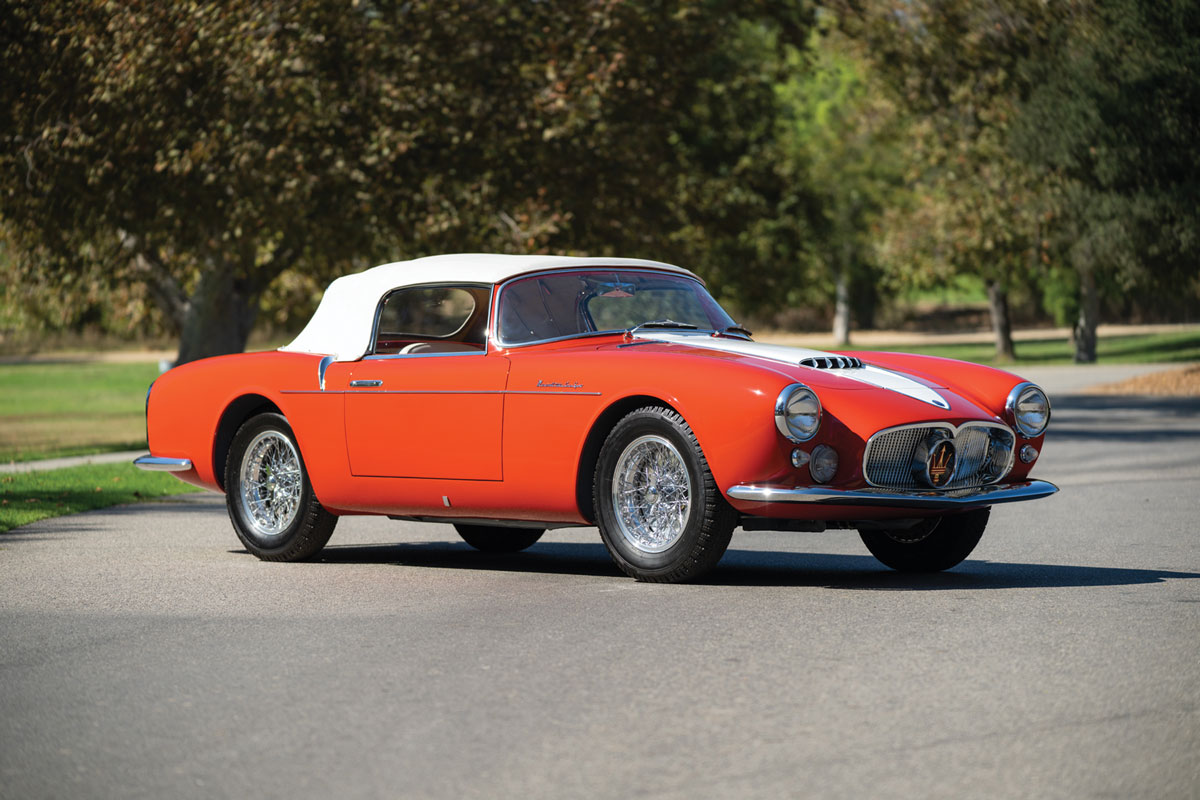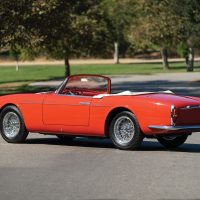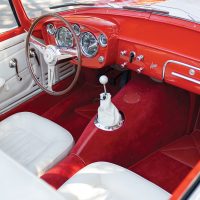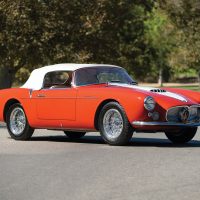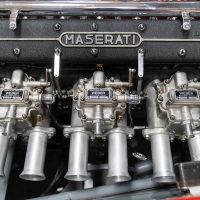SCM Analysis
Detailing
| Vehicle: | 1956 Maserati A6G54 Spyder |
| Years Produced: | 1956–57 |
| Number Produced: | 10 |
| SCM Valuation: | $2,775,000 |
| Tune Up Cost: | $1,500 |
| Chassis Number Location: | Stamped on a plate welded to chassis, right side |
| Engine Number Location: | Stamped on the block under the first carburetor, driver’s side |
| Club Info: | The Maserati Club |
| Website: | http://www.themaseraticlub.com |
| Alternatives: | 1955–58 Lancia Aurelia B24 Spider, 1953–62 Chevrolet Corvette, 1953–57 Aston Martin DB2/4 |
| Investment Grade: | B |
This car, Lot 49, was sold for $1,892,000 including buyer’s premium, at the Gooding & Company Geared Online sale held October 26–30, 2020.
As the first of a limited series of 10, this is a very important car in Maserati history. Each one was hand-built and slightly different from the other, the last model so manufactured by the Modenese company. Series production would become standard just a few months later with the launch of the 3500 GT.
In 1957, indeed, Maserati was living its own industrial revolution. Up until then, it was a manufacturer of racing cars or rolling chassis that were then assigned to coachbuilders to be dressed. The A6G — “A” for Alfieri (Maserati), “6” for the number of cylinders, and “G” indicating the cast-iron (“ghisa” in Italian) block, a nomenclature that did not change even when Maserati switched to an alloy unit — was created in 1950. The A6G2000 was equipped with a 2-liter engine and in 1954 it was replaced by the A6G54. It was available in four different models: a coupe and Spyder built by Carrozzeria Frua, a coupe created by Allemano, and the competition version created by Carrozzeria Zagato.
A grand total of 60 cars were manufactured among all the versions over three years, which gives one an idea of the production numbers of the company. Mechanically, the engine was a refined inline 6, with double overhead cams and, from 1956, two spark plugs per cylinder. Three Weber carburetors were good for 160 metric horsepower and a maximum speed of 131 mph.
If the sportier Zagato is the most coveted of the series — it was quite successful indeed — it is the Frua Spyder that is the most amazing in term of style. Frua got assigned 11 chassis to dress, which became two coupes (s/n 2181 and 2194) and nine Spyders (s/n 2180, 2182, 2183, 2187, 2191, 2192, 2193, 2196 and 2197). As the chassis series shows, the car sold by Gooding is the very first assembled, on October 12, 1956. The last one was manufactured just four months later, on February 22, 1957. As often happens, this first car sports some important differences from the following ones.
Obsessively researched
When I first saw this car, it was in early spring 2008, after its restoration in Italy, just days before the car was shown at Villa d’Este, where it won its class. The most amazing thing about this car, however, was not only the overall quality of the restoration, but the obsessive historical research behind it. This was not a surprise, as the project director was Adolfo Orsi Jr., a direct descendant of Adolfo Orsi and Omar Orsi. The Orsi family was behind the great success of Maserati’s glory days, having bought the firm from the Maserati brothers in 1937 and operating it through the late 1960s until it was taken over by Citroën.
Respected around the world for his competence, sometimes feared for his approach to historical integrity in restoration, and among the founders of the Preservation Class at Pebble Beach, Mr. Orsi went the extra mile in researching this car. As well he should have, as it is one of the most impressive symbols of beauty on wheels from his family business. The resurrection of s/n 2180 was not easy, as during 40 years spent in the U.S., the car underwent a series of major modifications, including having a Ford V8 installed. But the final result was definitely a 100-point car.
In 2014, it was returned to Italy to be shown in Modena and to receive a chassis reinforcement. The original Frua body did not provide enough structural strength to a chassis deprived of a roof, resulting in the car developing some cracks in the paint after just a few hundred kilometers of driving. After this process, the car was brought back to bare metal and fully resprayed, back to as-new condition.
Since then, the car was offered for sale at the Bonhams Quail Lodge auction in 2017, where it was a no-sale at $2,350,000. At the time, it was observed that the lack of its original engine hurt the bidding. I would disagree with those who take issue, as I don’t see the non-numbers-matching engine as a fault. The engine installed, number 2146, is absolutely identical and was originally installed in the 1956 A6G54 Allemano coupe, chassis 2146, manufactured in August 1956. Even from an International Chief Judge Advisory Group (ICJAG) perspective, this shouldn’t be considered a deduction.
All of the above makes me believe that the purchase of this Maserati at less than $2m just three years later was a great buy for the lucky new owner. He bought an essentially one-off and amazingly beautiful Maserati Spyder, one that would be welcomed in every classic-car event all over the world, and with a thoroughly researched and documented history. The price was a good quarter less than what one might logically expect for a car of this sort. ♦
(Introductory description courtesy of Bonhams.)
